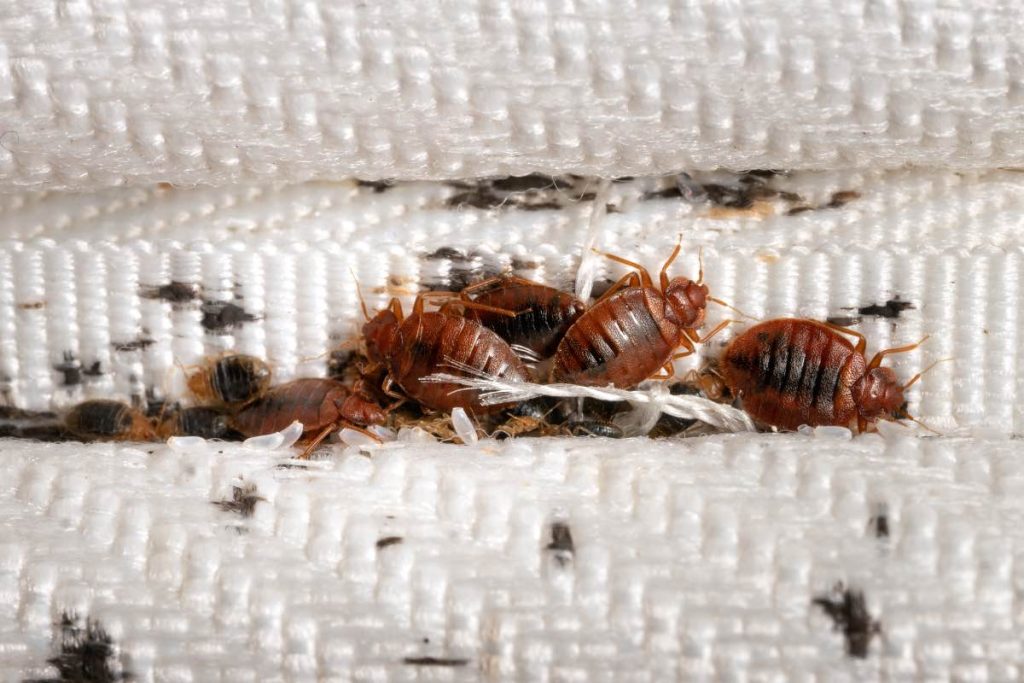The bedbug outbreak in Paris during fashion week was one of the stories making the rounds in the media this week. Emmanuel Grégoire, deputy mayor of Paris’ fashion district, quoted the Guardian as saying, “In reality, no one is safe… you can catch bedbugs anywhere and bring them home.” The country has been forced to close schools, so far 7 in number. In response to the “crisis,” French PM Elisabeth Borne convened an inter-ministerial emergency meeting on Friday 6th October.
Netizens and fashion influencers have expressed concern over the bedbug outbreak infesting their communities due to travellers from France. Some even called for the suspension of flights from France. However, one of the netizens drew attention to a more critical crisis in the era of climate change: the presence of microplastics in the clouds.
“But there’s literally plastic in the clouds (and seas, and all water sources) from fast fashion microfibers. It makes the bedbugs seem quaint and natural, doesn’t it? From fast fashion microfibers,” he tweeted.
For those who do not know, microfiber is a synthetic material created by a chemical process. It comprises elements like polyester, nylon polymers, or wood pulp. It can be found in synthetic garments (clothing produced with plastic instead of natural threading like cotton), plastic tarps, vehicle tires, synthetic ropes, fishing gear, etc.
They are a form of microplastic (plastic particles smaller than 5 mm in diameter) shaped like a fibrous substance. According to research, the shape of these fibres can be more harmful to marine or aquatic life than spherical microplastic beads or other microplastics with smooth surfaces because the fibres have a larger surface area (more area for toxic substances to adhere to) and are more able to tangle and catch on to things.
Plastic Air Pollution
Apart from bedbug outbreak, plastic pollution is one of the biggest threats to humanity today. According to research, people and animals, both through water and food, consume and inhale substantial amounts of microplastics. Microplastics have been found in various organs of living beings and corpses, including the lungs, heart, blood, placenta, and excrement.
“Plastics are designed to be durable, so they may remain inside the body for long periods without the possibility of these being broken down or removed,” said Lauren Jenner, a postgraduate researcher at the Hull York Medical School as published by Yale School of the Environment.
Plastic is inextricably connected to air pollution. Microplastics from plastic debris that build up on land eventually enter the ocean. These tiny plastic particles enter the atmosphere when they are released along with ocean spray. Plastic manufacturing produces greenhouse gases and other pollutants that pollute the air and contribute to climate change and other environmental issues.
Almost 40% of the world’s plastic waste is burned down, releasing toxins into the atmosphere. A study released in 2021 linked smog (a mix of smoke and fog) in India, notably in Delhi, to the burning of plastics.
Plastic in the Skies
In addition to the Antarctic snow, freshwater and oceans, microplastics have also been found in cloud water, specifically hanging atop two Japanese mountains, a new and concerning location for them to be found, according to a recently published study.
The Japanese researchers led by Hiroshi Okochi, a Waseda University professor who conducted the study, collected sample cloud water from the summits of Mount (Mt.) Fuji and Mt. Oyama identified airborne microplastics from nine types of plastics.
Because of this discovery, researchers hypothesised that high-altitude microplastics would affect cloud formation and, in turn, further contribute to climate change. It should be noted that in this particular study, they did not look into these possibilities. And because microplastics degrade faster when exposed to ultraviolet light from the sun, a high concentration of microplastics in the clouds increases greenhouse emissions.
In announcing the latest research results, the university said, “Ten million tons of these plastic bits end up in the ocean, released with the ocean spray, and find their way into the atmosphere. This implies that microplastics may have become an essential component of clouds, contaminating nearly everything we eat and drink via ‘plastic rainfall”, as quoted by Al Jazeera.
This recent research on airborne microplastics is not the first of its kind. An article published at the Yale School of Environment concerning research findings showing small particles of plastic are continuously released into the sky and can affect clouds, changing precipitation patterns and temperature was published early this year, just as the findings from the Japanese study.
Because of its effects on microplastics’ dispersal, degradation, and interactions with ecosystems, climate change exacerbates their adverse environmental effects. In light of climate change, it is imperative to comprehend these effects to create solutions that effectively manage the plastic pollution problem.
Africa
Although research on airborne microplastics in African skies hasn’t been published, who’s to say our skies aren’t affected, and our soils aren’t contaminated by toxins from “plastic rainfall”?
After all, Africa produces 5% of global plastic and consumes 4%. Rising populations and urbanisation fuel increased single-use plastic, worsening environmental pollution and health risks.
Leaders in Africa, non-governmental stakeholders, and the general public must all accept responsibility for human actions that cause plastic pollution.
To protect both human and environmental health, it is imperative that the current systems be redesigned and that financial solutions be found to eradicate plastic pollution and mitigate the effects of climate change.
Also read Turning Plastic Waste into Green Jobs: A Path to Prosperity and Sustainability.


Your point of view caught my eye and was very interesting. Thanks. I have a question for you.